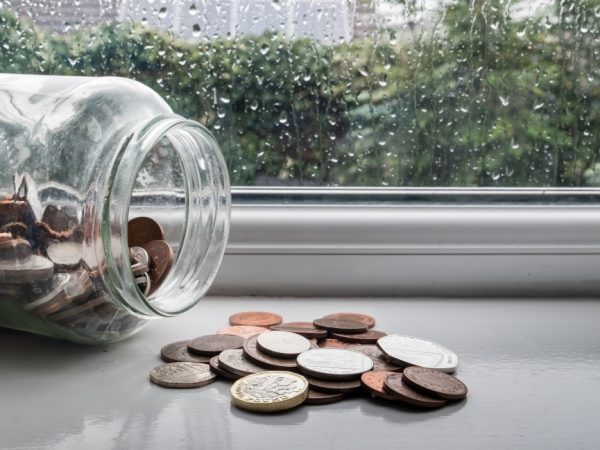In extreme cases, surgery methods are necessary in treating incontinence. It can be easy to jump straight to long-term treatment methods without thinking.
Many people forget that money saving, natural methods can help. Natural treatment for incontinence is arguably under-researched, with studies showing that individuals are often unsure of what methods are effective. A study in 2004 showed that individuals often take the wrong approach when managing incontinence. The results showed that 38% of incontinent individuals tried dangerously limiting fluid intake, whilst only 21% tried kegel exercises.

Studies have shown that exercises, lifestyle changes and even natural supplements can rapidly help treat incontinence. All of these methods require patience, commitment and willpower. Kegel exercises are at the top of the list for effective natural treatment. The purpose of these is to strengthen the pelvic floor muscles. This aim means they are commonly recommended for stress incontinence and urge incontinence. They are also useful for faecal incontinence when the cause of the problem is a weak pelvic floor. If you are unsure about the effectiveness of these, you should consult your Doctor about your personal situation. Kegel exercises involve flexing the same muscles you use to stop your urinary flow. You can read about how to do kegel exercises here. Experts insist that these should be attempted before considering surgery. Phillipe Zimmern, MD, a professor of urology asserts “Kegels are very useful for early stages of incontinence. They are particularly effective after a surgical repair or accident and can maintain pelvic floor tone over time”. The key to success from these is a commitment to continue doing this. As Dr Zimmern asserts, “you’ll have to keep doing the exercises to maintain the benefit”. If you are having problems doing these, you can try biofeedback. This helps you to identify and strengthen your pelvic floor muscles can help with Kegel exercises. This process teaches you to use signals from your body to help control symptoms.

Bladder retraining is another programme that requires no operations or surgery. This method effectively trains you to hold on for longer in between toilet breaks. Bladder retraining aims to have a long-term impact on the frequency of leakages. Individuals have much better control over their bladder after this training. Through gradually increasing the time between going to the toilet, you can train your bladder to hold more urine for longer periods of time. This process allows you to slowly stretch your bladder so it can hold larger volumes of urine. The bladder muscle will eventually stretch significantly and you will gain more control over your bladder. In a bladder training programme, you are taught ways to distract yourself when you feel the need to urinate such as counting backwards from 100. The programme can also help you stay calm and wait for the urge to pass urine. Bladder retraining is proven to be very effective for individuals with urge incontinence and cannot reach the toilet in time. They can also be successful for symptoms of an overactive bladder and in some instances can help people with stress incontinence. You should talk to your Doctor or a Urologist about a bladder retraining programme. Diana Hankey-Underwood, winner of Nurse Practitioners in Women’s Health in 2007 asserts, “bladder retraining doesn’t hurt and almost anyone can try it”.
Lifestyle changes such as changing your diet plan are often overlooked. Kristen Burns, an adult urology nurse practitioner asserts, “there are certain foods that are triggers for people with incontinence or overactive bladders. These include spicy foods, which doctors have identified as common irritants for women.” Healthcare experts agree that you should try and avoid chocolate, citrus fruits, coffee and alcohol. Vitamin D has been proven to be successful in treating incontinence. A study in 2010 showed that not getting enough vitamin D may cause problems in reaching the bathroom in time. Researcher Samuel Badalian states, “higher vitamin D levels were associated with a decreased risk of pelvic floor problems. A deficiency or low level of vitamin D could have a negative impact on muscle strength and structure in the pelvis needed for urinary control. Investigators focussed on 1,881 women and compared vitamin D levels with the incidence of urinary incontinence. The authors reported that the chance of having incontinence was reduced in women aged 50 and older who had vitamin D levels of 30ng/mL or higher.

Herbal treatments have also been proven to be successful if other dietary changes do not work. These include Chinese herbal blends, corn silk and capsaicin. One common treatment is Gosha-Jinki-gan, which is a blend on 10 herbs. Japanese researchers have discovered that people who took it daily for 8 weeks went to the bathroom less. Bucha is another herb that is found in the mountains of South Africa and has been used as a medicine since the 1650s. You should always talk to a Doctor before trying a herbal remedy. Magnesium is another mineral that has proven to be effective in improving incontinence. It is important for proper muscle and nerve function and has recently been shown to improve incontinence. Experts believe that it can reduce bladder muscle spasms and allows the bladder to fully empty. A study at Tel Aviv University in Israel found that more than half of the women who took magnesium hydroxide pills twice a day had improvements in their incontinence. Foods rich in magnesium include potatoes, corn and bananas.
A highly effective way to improve your incontinence is through managing your weight. It is estimated that each 5 unit increase in body mass index is associated with an incontinence prevalence risk of up to 50%. Carrying excessive weight can cause additional stress to be placed on a person’s pelvic floor muscles. Even gentle exercise can be helpful in improving symptoms of incontinence. If you weigh 200 pounds for example, losing only 10 pounds can reduce the frequency of your leaks. If you are severely obese, a healthy weight loss programme or bariatric surgery may be necessary.
Facts and Myths about Managing Incontinence Naturally:
Myth: You should avoid liquid if you are incontinent
Being dehydrated can only irritate the bladder further. Although this may be tempting, you should resist stopping drinking water. Ensure you stay hydrated and prevent further irritation. As long as you do not drink excessively, water is essential for maintaining good health.
Myth: Hypnotherapy is a waste of time
In a decades-old study published in the British Medical Journal, of 50 women who underwent 12 hypnotherapy sessions in a month, most showed improvement. If herbal remedies, exercise and other factors do not work, it can not hurt to try hypnotherapy.
Myth: Incontinence will go away by itself
Although incontinence can be embarrassing to mention, do not presume it will just go away by itself. It is more beneficial to try treatment methods than wait until it gets worse.
Fact: Smoking is a high risk factor for incontinence
Smoking has been confirmed by experts to be a high risk factor. Incontinence is twice as common among smokers as it is among non-smokers.
Fact: Incontinence is not a normal part of ageing
Are you putting incontinence down to being in your retirement years? Stop accepting this problem. Incontinence is not a “normal” problem to have. It should never be something you should live with and think of as part of ageing.
Fact: Both men and women can do Kegels
Many people think of incontinence as simply a woman’s problem. Women are frequently told to do Kegel exercises; however, they do work for men too.

Originally posted 2018-03-27 15:37:46.












Leave a Reply